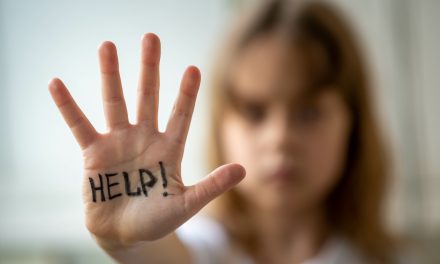Earlier this week, video footage was retrieved and leaked from the Los Angeles County jails and dispersed to different media outlets. The footage depicts scenes of violence within the confines of the prison and, even more shockingly, met with seemingly indifferent reactions from the on-duty correction officers. One video captures an inmate in shackles delivering her baby in a corridor.
A collection of stark videos spanning the last six years, found on a discarded USB stick by one inmate and later smuggled out of jail by another, portray an unsettling image of the penal system. This image suggests a level of violence and disorder within the prison walls that far exceeds what has been previously disclosed to the public.
Upon review by The Times, several videos reveal stabbing and bare-knuckle fighting incidents. One clip captures a prisoner’s suicide attempt, while another features a group of jailers striking an inmate on the head to control him. A particularly harrowing footage records a woman giving birth unassisted in a corridor, her newborn landing on the cold, blood-soaked jail floor.

We all know that it certainly wasn’t for being a good citizen if someone was in jail or prison. Prison or jail should not be a cakewalk. However, we are increasingly seeing prisoners’ constitutional rights and human rights being violated. They are likely even more dire than we know due to the nature of the security in the facilities. We don’t really get to see what is happening on the inside. And even if a former prisoner speaks out, they will likely not be taken seriously or believed.
Kastellio Vaughn
These images are similar to the case of Kastellio Vaughn. After serving five years of a twenty-year sentence at the Alabama Department of Corrections (ADOC), shocking images of Kastellio Vaughan emerged in 2022. The photos reveal Vaughan appearing gaunt and severely ill, his eyes glazed over. It’s clear from the photos that Vaughan was in a dire health condition, urgently requiring medical intervention. These images, allegedly released by a fellow inmate, suggest severe neglect of Vaughan’s care by the ADOC, posing potential risks to Vaughan and his fellow inmates.
In 2013, Vaughan suffered a gunshot wound to his abdomen during an attempted home invasion. Masked and armed, Vaughan had broken into a house, demanding money from the male homeowner. The homeowner, himself a gun owner, managed to shoot Vaughan as he attempted to flee. Vaughan was sentenced to 3 years for first-degree robbery. Many of the images in 2022 of Vaughan display the lingering injury from this incident. His sister, Kassie Vaughan, told the media that Vaughan’s ongoing health problems stem from malnourishment and poor care, and complications left untreated since the gunshot wound.
Vaughan is serving another 20-year sentence for armed robbery within the ADOC. With Vaughan’s consent, Alabama prison officials made his health records public. According to the ADOC, Vaughan was admitted to Jackson Hospital in Montgomery on August 3rd, 2022, for a bowel obstruction surgery, a complication resulting from his gunshot wound. He was released against medical advice on August 10th and readmitted on September 3rd for post-operative complications. Once again, Vaughan left against medical advice on September 7th, refusing all medication.
Given the complex and painful recovery process following bowel obstruction surgery, one wrongful death attorney has even stated that this type of surgery is among the most high-risk. The ADOC contends they cannot compel inmates to receive medical care and that Vaughan’s current state results from his choices. They also claim that Vaughan has received medical treatment “at least 11 times since July 2022 until September 2022”. However, Vaughan’s sister, Kassie, contends on her Facebook page that her brother could not make informed decisions.
Considering the gaunt images of Vaughan that came to light in early September, questions arise as to the adequacy of the care he received from the ADOC. According to a September 29th, 2022, update from his sister’s Facebook page, Vaughan could not walk. The Vaughan family has since hired attorney Lee Meritt to advocate for Vaughan and hold the ADOC accountable for any possible misconduct. Vaughan’s family is in daily contact with him, and he is showing signs of slow recovery. As of June 30th, 2023, Vaughn, per his sister’s social media, has remained in good health since getting the care he needed.
It literally took a village, including social media, lawyers, and the Alabama inmate strike, to create any change. And that was for just one inmate. Vaughn should have received proper care when he began to decline. It is part of his constitutional rights as a human that is incarcerated. Plus, once again, we have to question if what the ADOC claimed was correct. Was Vaughn offered care he denied? Was he in any mental or physical shape to even deny care? We will never really know the truth, only the facts of the images of the state Vaughn ended up in. And that says a lot.
Constitutional Rights for Prisoners
The issue of constitutional rights for prisoners in the United States often becomes a point of contention. It’s widely understood that by committing a crime, one has broken a social contract and, as a result, must forfeit certain freedoms as a form of punishment. However, this forfeiture doesn’t and shouldn’t equate to a total relinquishment of basic human rights. Yet, unfortunately, rights violations within the U.S. prison system remain far too common.
First, let’s understand the constitutional rights of prisoners. The U.S. Constitution protects everyone within the nation’s borders, irrespective of their status. The Eighth Amendment protects prisoners from cruel and unusual punishments, implying a right to decent conditions and adequate healthcare. The First Amendment preserves the rights of free speech, religion, and association, albeit moderated according to the institution’s security needs.
The 1st Amendment
The First Amendment to the United States Constitution guarantees five fundamental freedoms: freedom of religion, speech, the press, assembly, and the right to petition the government to redress grievances. These freedoms form the bedrock of democratic values and are designed to protect the open exchange of ideas, ensuring a check on government power.
However, the application of First Amendment rights becomes more complex when considering individuals who are incarcerated. It’s a delicate balancing act: the state must maintain security, order, and discipline within the prison environment, yet it must also protect the fundamental rights of the individuals in its custody.
Freedom of Speech: Prisoners retain their right to freedom of speech, but it’s subject to more limitations than those in a free society. Courts have generally held that prison officials may restrict prisoners’ speech to maintain order and security in the facility. For instance, prisoners’ mail can be read and censored for contraband or content that could incite violence or criminal activity.
Freedom of Religion: The First Amendment protects the right to practice religion, even while incarcerated. Prisoners should be permitted to observe religious practices and have access to religious materials as long as these practices don’t disrupt the order and security of the prison. However, violations occur when prisons don’t provide appropriate accommodations for religious observances or unfairly favor one religion.
Right to Assembly: The right to peaceful assembly is largely curtailed in prisons due to security and order concerns. Group meetings can be monitored or restricted, especially if the assembly poses a risk to prison security.
Right to Petition: The right to petition allows prisoners to challenge the conditions of their confinement and to seek redress for violations of their constitutional rights. However, the Prison Litigation Reform Act of 1996 has made it more difficult for prisoners to bring lawsuits, adding procedural hurdles which often result in dismissals before the case is heard.
Violations of these First Amendment rights can occur in the prison system. Restrictions on prisoners’ communications can lead to censorship of their speech beyond what’s necessary for security purposes. Religious freedoms can be violated when prisoners are denied access to religious items, services, or dietary accommodations. And the right to petition is often undermined by the legal and bureaucratic obstacles that prisoners face when trying to challenge the conditions of their confinement.

The 8th Amendment
The Eighth Amendment to the United States Constitution, part of the Bill of Rights, is a critical piece of legislation that protects individuals from cruel and unusual punishment. The text of the amendment reads: “Excessive bail shall not be required, nor excessive fines imposed, nor cruel and unusual punishments inflicted.”
In the context of incarceration, the Eighth Amendment plays a vital role in safeguarding the basic human rights of inmates, despite their involvement in criminal activities. It limits the actions of prison authorities, ensuring that inmates aren’t subjected to unduly harsh, inhumane, or degrading treatment or conditions. Applying the Eighth Amendment within prisons mainly revolves around two central tenets: conditions of confinement and healthcare rights.
Conditions of Confinement: The Eighth Amendment protects incarcerated individuals from substandard living conditions. Prison authorities have an obligation to provide inmates with basic human necessities, such as food, clothing, shelter, and reasonable safety measures. Overcrowding, violence, lack of sanitation, exposure to extreme temperatures, and inadequate nutrition all could potentially fall under “cruel and unusual” conditions.
In the landmark case of “Estelle v. Gamble” (1976), the Supreme Court held that deliberate indifference to the serious medical needs of prisoners constitutes the “unnecessary and wanton infliction of pain,” which violates the Eighth Amendment. This ruling clarified that an inmate’s medical needs must be adequately addressed.
Healthcare Rights: Besides the basic living conditions, the Eighth Amendment ensures that prisoners have a right to adequate medical care. A prison sentence should not be a death sentence due to a lack of necessary medical attention. Prisons must provide timely and appropriate healthcare to inmates, including physical, dental, and mental health services.
However, the Eighth Amendment isn’t absolute in protecting prisoners’ rights. The courts generally apply a “deliberate indifference” standard to assess whether prison officials have violated the Eighth Amendment. This means that a violation isn’t simply about poor conditions or inadequate medical care but whether officials were aware of these conditions and chose to ignore or not adequately address them.
Furthermore, proving that punishment is “cruel and unusual” is a high bar. The courts interpret it as punishment that degrades human dignity or involves torture, which a civilized society does not accept. The ambiguity in interpreting “cruel and unusual” often makes it challenging to address many subpar prison conditions.
Despite these constitutional provisions, the truth remains that prisoners are often subject to rights abuses, raising serious ethical concerns. The physical conditions in many prisons violate the Eighth Amendment’s prohibition against cruel and unusual punishments. Overcrowding, violence, lack of adequate healthcare, unsanitary conditions, and unhealthy food contribute to an environment that undermines the basic human dignity of prisoners.
95% of Prisoners Will Eventually Be Released

If someone does the crime, they should do the time. But if we want prisoners who have committed crimes to come out as healed and safe people, we must implement prison reform. Will this ever actually happen? Unfortunately, I am doubtful. Even people who are not incarcerated, particularly marginalized people such as people of color or those of the LGBTQ+ community, have their own fundamental human rights compromised. So what hope do we really have for human rights and reform for our prisoners’?
































South Florida Media Comments